What is 3-MeO-PCP HCL?
3-MeO-PCP, also known as 3-Methoxyphencyclidine, is a unique dissociative substance belonging to the arylcyclohexylamine class.
It is a derivative of phencyclidine (PCP) and shares chemical similarities with other substances like methoxetamine and 3-MeO-PCE. By blocking NMDA receptors in the brain, 3-MeO-PCP induces its effects, which can range from subtle sensory enhancements to profound dissociative experiences.
In this comprehensive guide, we will explore the various aspects of 3-MeO-PCP, including its chemistry, pharmacology, subjective effects, toxicity, and legal status. So, let’s dive in and gain a deeper unDimethocainederstanding of this intriguing substance.
Chemistry
3-MeO-PCP has a chemical structure that falls under the arylcyclohexylamine class. It contains a cyclohexane ring bonded to two additional rings at R1. One of these rings is a piperidine ring, which is a six-membered nitrogenous ring, while the other is an aromatic phenyl ring substituted at R3 with a methoxy group. Structurally, it is a derivative of PCP and shares similarities with 4-MeO-PCP.
Pharmacology
The pharmacological effects of 3-MeO-PCP are primarily attributed to its action as an NMDA receptor antagonist. The NMDA receptor, a subtype of glutamate receptor, plays a crucial role in the transmission of electrical signals between neurons in the brain and spinal cord.
By binding to and blocking these receptors, 3-MeO-PCP disrupts normal neural network activity, resulting in the characteristic dissociative effects. It has a higher affinity for the NMDA receptor compared to PCP and other anisyl-substituted compounds like 2-MeO-PCP and 4-MeO-PCP.
3-MeO-PCP also exhibits affinity for sigma-1 receptors, serotonin transporters (SERT), and H1 receptors. However, it does not show appreciable affinity for the μ-opioid receptor or dopamine transporter, contradicting earlier claims of opioid or dopaminergic activity. Further research is needed to fully understand the pharmacology of 3-MeO-PCP.
Subjective Effects
The subjective effects of 3-MeO-PCP can vary depending on the dosage, route of administration, and individual sensitivity. It is often described as more stimulating and less immobilizing compared to other dissociatives like ketamine or MXE.
At lower doses, it can induce sensory enhancements such as color enhancement, acuity enhancement, tactile enhancement, auditory enhancement, and bodily control enhancement.
However, as the dose increases, sensory suppressions such as tactile suppression, motor control loss, auditory suppression, and acuity suppression become more prominent.
One significant aspect to consider when using 3-MeO-PCP is its potential to induce mania, delusions, and psychosis. Reports suggest that these effects are more likely to occur with 3-MeO-PCP compared to other dissociatives, possibly due to its high potency and erratic dose response. It is important to approach this substance with caution and practice harm reduction strategies to mitigate the risks associated with its use.
Physical Effects
- Stimulation: Users often report a noticeable level of stimulation with 3-MeO-PCP, which is described as clear and subtle.
- Spontaneous bodily sensations: This compound can produce a motionless, constant, sharp, euphoric activation of nerve endings throughout the body.
- Physical euphoria: 3-MeO-PCP is known to induce euphoria, especially of the manic variant, more readily compared to other dissociatives.
- Tactile enhancement/suppression: At lower doses, this substance can enhance tactile sensations, but at higher doses, it may lead to tactile suppression or anesthesia.
- Pain relief: The compound possesses anesthetic effects, providing pain relief, particularly at higher doses.
- Bodily control enhancement/loss: 3-MeO-PCP can enhance bodily control at lower doses, but at higher doses, it may lead to motor control loss.
- Spatial disorientation: This effect is more prominent at higher doses and can cause a sense of disorientation in relation to one’s surroundings.
- Appetite suppression/enhancement: 3-MeO-PCP can suppress or enhance appetite, depending on the dosage.
- Nausea suppression: Users may experience a reduction in nausea while under the influence of this substance.
- Restless legs: Restless legs syndrome can occur as a side effect of 3-MeO-PCP use.
- Respiratory depression: In heavier dosage ranges, respiratory depression may occur, although the extent of this effect is unclear.
- Physical autonomy: Users may experience a dissociation from their physical body, leading to a sense of physical autonomy.
- Olfactory hallucination: Distortions in the sense of smell, including hallucinations, may occur during the experience.
- Optical sliding: Visual perception may be altered, leading to a perception of objects sliding or moving.
- Vibrating vision: At high doses, the eyes may exhibit rapid wiggling motion, resulting in blurred vision and nystagmus.
Visual Effects
- Visual acuity enhancement/suppression: At lower doses, 3-MeO-PCP can enhance visual acuity, but this effect diminishes as the dosage increases.
- Double vision: Users may experience double vision, where objects appear duplicated or overlapped.
- Frame rate suppression: Perception of the frame rate at which visual stimuli are processed may be slowed down.
- Pattern recognition suppression: 3-MeO-PCP can impair the brain’s ability to recognize and interpret patterns.
Distortions
- Perspective distortions: Perception of depth and distance may be altered, causing distortions in perspective.
- Scenery slicing: The visual field may appear to be fragmented or sliced into distinct sections.
Hallucinatory States
- Internal hallucination: Users may experience vivid hallucinations of settings, sceneries, landscapes, perspectives, and scenarios.
- External hallucination: Hallucinations that appear to originate from the external environment may occur, although they are less common with 3-MeO-PCP compared to other hallucinogens.
Cognitive Effects
- Anxiety suppression: 3-MeO-PCP can alleviate feelings of anxiety and promote a more relaxed state.
- Disinhibition: Users may experience a reduction in inhibitions and increased social openness.
- Cognitive euphoria: A sense of cognitive euphoria can be induced by 3-MeO-PCP.
- Compulsive redosing: This effect is more prominent when the substance is smoked or vaporized, leading to an urge to take repeated doses.
- Conceptual thinking: Users may experience enhanced creativity and the ability to think abstractly.
- Déjà vu: The feeling of familiarity with a situation or event that is perceived as being experienced before may occur.
- Mania: 3-MeO-PCP has a higher likelihood of inducing manic states compared to other dissociatives, particularly during the offset of the experience.
- Depersonalization and Derealization: Users may feel detached from their own sense of self and the external world.
- Psychosis: As mentioned earlier, psychosis is more common with 3-MeO-PCP compared to other dissociatives and can occur during the onset, come up, or offset of the experience.
- Delusion: Delusions, including false beliefs, may occur as a result of 3-MeO-PCP use.
- Dream potentiation: The substance can enhance the intensity and vividness of dreams.
- Memory suppression: 3-MeO-PCP may impair short-term memory and cause gaps in memory recall.
- Ego death: Users may experience a dissolution of the ego or a sense of transcendence from individual identity.
- Amnesia: Memory loss may occur during the experience.
- Immersion enhancement: The ability to become fully absorbed and engaged in activities or experiences may be enhanced.
- Increased music appreciation: Music may sound more profound and enjoyable under the influence of 3-MeO-PCP.
- Time distortion: Users may perceive time as either speeding up or slowing down.
- Thought deceleration: The speed of thought processes may decrease, leading to a more contemplative state.
- Increased libido: At lower dosage ranges, 3-MeO-PCP can enhance sexual desire.
The amine will likely be now not primary; secondary amines like methylamino or ethylamino, or tertiary cycloalkylamines inclusive of piperidino and pyrrolidino, will be the usually encountered N-substituents. Does any man or woman recognize a lot about this fabric? i’m brooding about if what I acquired is bunk. I snorted 30mg and It honestly is sort of a moderate one component. not sure what it may be. 3-MeO-PCP HCL
whilst dependence has formulated, cravings and withdrawal consequences might also properly come approximately if 1 fast stops their usage. you’ll find out severa testimonies of customers turning out to be very severely structured on this material.Arylcyclohexylamines varyingly have NMDA receptor antagonistic, dopamine reuptake inhibitory, and μ-opioid receptor agonistic Attributes. additionally, σ receptor agonistic, nACh receptor adversarial, and D2 receptor agonistic steps had been pronounced for a lot of these brokers. Antagonism of the NMDA receptor confers anesthetic, anticonvulsant, neuroprotective, and dissociative consequences; blockade of the dopamine transporter mediates stimulant and euphoriant results along side psychosis in huge amounts; and activation of the μ-opioid receptor brings approximately analgesic and euphoriant consequences.
3 Meo Pcp
With a drug as strong as 3-MeO-PCP a small discrepancy in measurement will make a surroundings of change in physical and intellectual response for the dose. it is for those elements that it would be in one’s great choice to hire a volumetric dose size method as on linedonline throughout this tutorial.
three-CL-PCP is sincerely an arylcyclohexylamine dissociative. An arylcyclohexylamine is made of a cyclohexylamine tool with the aryl moiety attachment. The aryl crew is positioned geminal for your amine. in the best situations, the aryl moiety is usually a phenyl ring, frequently with added substitution.

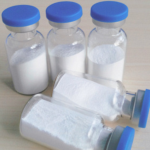

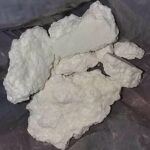

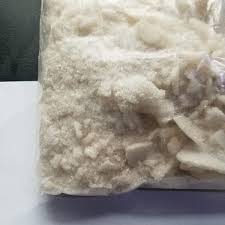
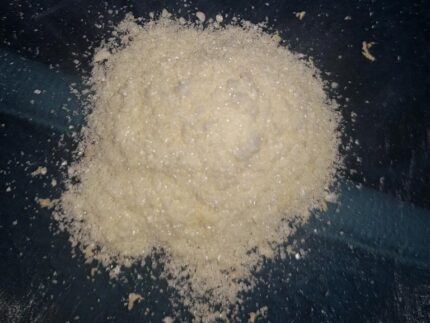
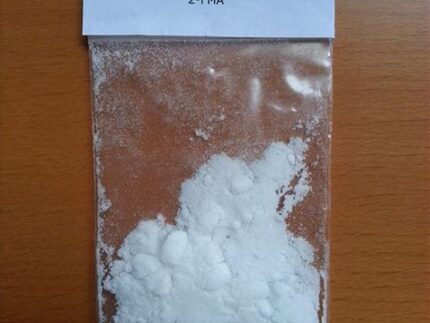
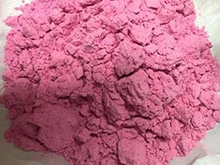
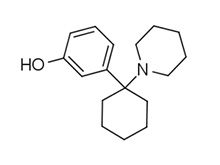

Reviews
There are no reviews yet.